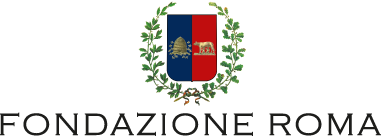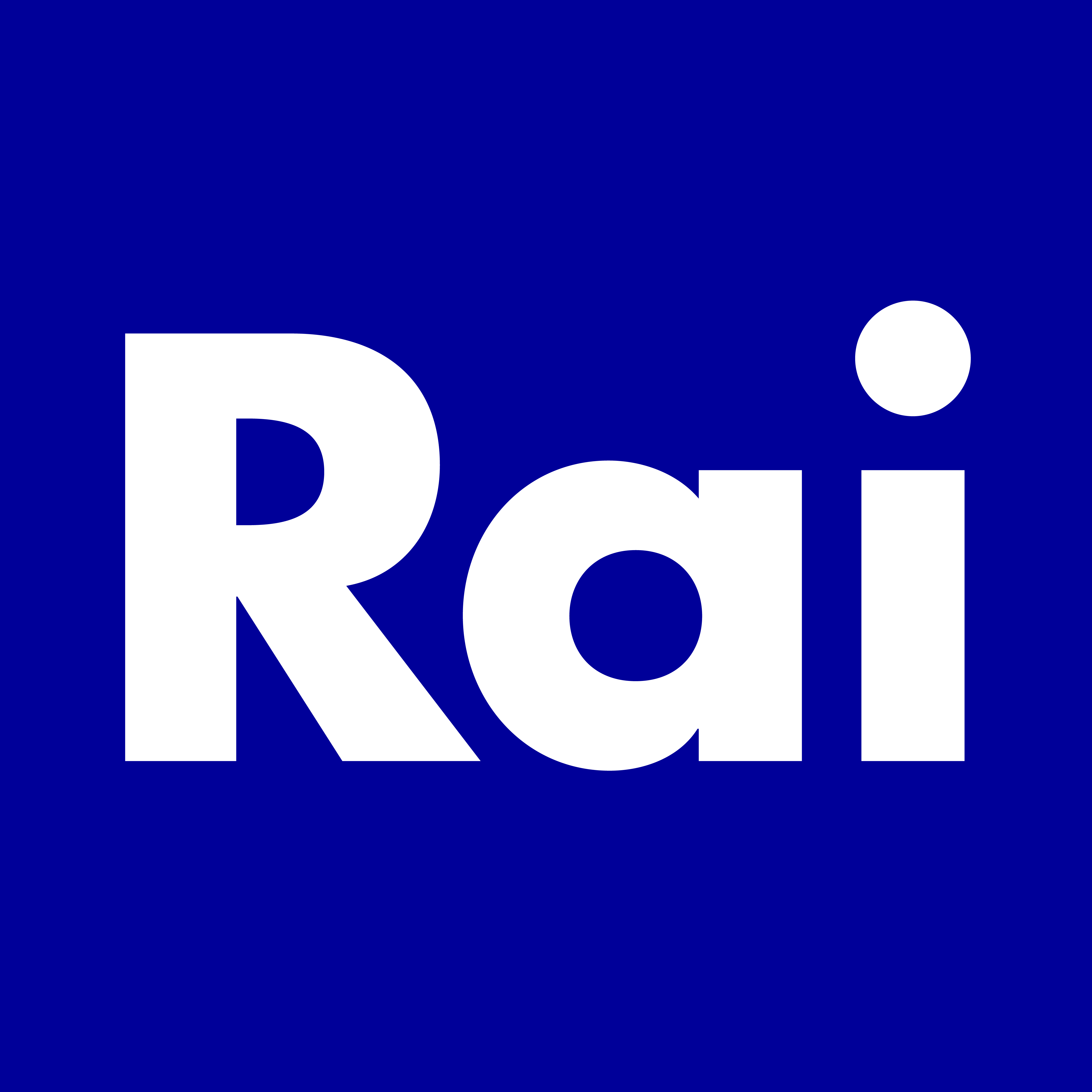Theatre and knowledge
by Monique Veaute
Culture and education are indissolubly linked. They bring together the pleasure of knowledge and discovery, as well as the various means of transmitting knowledge. Ten years ago these were the convictions of Guido Fabiani, who decided to save the Palladium theatre from a sad fate ŌĆō that of becoming a bingo hall ŌĆō and turn it into the theatre of Roma Tre University. From the transformation of the building ŌĆō which was carried out with the assistance of Richard Peduzzi, the then director of Villa Medici ŌĆō to its artistic programming, we have experienced the delight that accompanies every intellectual adventure, experimenting with different forms of (live) entertainment and knowledge. The first contacts between academics and ŌĆśacrobatsŌĆÖ ŌĆō for this is what we were ŌĆō were epic, and also filled with proposals and ideas. Assembled in the university Senate conference room, together with Guido Fabiani and myself, were Franco Barberi, Giorgio Barberio Corsetti, Alessandro Baricco, Biancamaria Bosco Tedeschini Lalli, Giancarlo Bosetti, Mario Brunello, Ilaria Caraci, Marco Causi, Francesco Cellini, Roberto Cicutto, Giorgio Ciucci, Carmela Covato, Renato Criscuolo, Michele DallŌĆÖOngaro, Emma Dante, Leonardo De Franceschi, Giorgio De Vincenti, Barbara Frandino, Gaia Furrer, Gianpiero Gamaleri, Lisa Ginzburg, Katia Lab├©que, Marielle Lab├©que, Canio Loguercio, Piero Maccarinelli, Francesca Manica, Giacomo Marramao, Maurizio Martusciello, Arturo Mazzarella, Renato Moro, Rossella Panarese, Lorenzo Pavolini, Richard Peduzzi, Giorgio Piccinato, Roberto Pujia, Eligio Resta, Jacqueline Risset, Danielle Rouard, Giancarlo Sammartano, Raffaele Simone, Maria Rosaria Stabili, Elena Stancanelli, Maria Vittoria Tessitore, Vito Zagarrio, Fabrizio Grifasi ŌĆō the current director of the Fondazione Romaeuropa ŌĆō and Valeria Grifasi, who assisted by the technical director, Alfredo Sebastiano, covers the role of artistic director of the Palladium with passion. Naturally, President Giovanni Pieraccini was also among us. We all agreed that a stage is not a classroom and that certain challenges had to be faced: to offer a programme that combined Science, the Law, Economics and, of course, Literature, Music, and Theatre. Over the years, various events festivals, and institutions have found a home at the Palladium. They have evolved, and they have opened up to young, and increasingly large, audiences: Roma Tre Orchestra, Roma Tre Film Festival, Teatro Dams Fest, the programmes of Radio 3 Scienza, Cortoons (an international short animation film festival), the Festa dŌĆÖAfrica (an international festival of contemporary African cultures), Ztl-pro (an artistic venture aimed at encouraging contemporary theatre) and Teatri di Vetro (a contemporary theatre festival). We also aimed at interacting with the local people living in the Garbatella district, an distinctive area of the city of Rome, and seeing the fruits of this interaction on the stage of the Palladium. In the past, the Department for Cultural Policies of the 11th municipality has organised a festival devoted to the artists who work in this area. It is impossible to mention all the events that have been organized in recent years. However, I would like to mention two that have lodged in my memory. The first took place during the recent transit of Venus across the Sun, an extremely rare, almost mythical astronomical phenomenon, during which the planet Venus passes directly between the Sun and the Earth, becoming visible against (and hence obscuring a small portion of) the solar disk. The event was organized jointly by the Departments of Biology, Physics and Geology of Roma Tre University in partnership with Radio 3 Scienza. From six a.m., an incredible number of people observed this phenomenon through telescopes installed in various parts of Garbatella, while experts passionately added their comments. The other event took place one very special evening during which a Garbatella pastry chef ŌĆō with the help of Lisa Ginzburg, Lorenzo Pavolini, and the chefŌĆÖs own impressive collection of photographs ŌĆō told us about the origins of his neighbourhood, the visit of the Dalai Lama, workers getting back home after work, not to mention the street parties that his grandfather carefully recorded with his camera. If, on the one hand, some of these programmes are now a thing of the past, perhaps because their success took them elsewhere, on the other hand the Palladium has offered something new to the city by opening its doors to independent Italian artists. From the very beginning it was our intention to transform this theatre into an international showcase. This is the reason why the events organized by the Department of Film Studies of Roma Tre University have involved directors and producers from all over the world, while the Romaeuropa Festival has brought onto the stage of the Palladium renowned artists such as Akram Kahn, Peter Brook, Patrice Ch├®reau, Philippe Decoufl├®, Marina Abramovic, Enzo Cucchi, Peter Sellars and many more. ┬ĀThe success of the Palladium ŌĆō a place for exchanges and meetings ŌĆō lies in the fact that it has managed to overcome the challenge of decentralization. Despite some peopleŌĆÖs scepticism about whether a theatre outside the city centre could be successful, the response of both critics and public has been enthusiastic. Audiences have grown, attracted by varied and eclectic artistic programmes that mirror the complex world in which we live. Rome City Council, the Province of Rome, and the 11th Municipality have loyally supported us over the past ten years, allowing us to turn our dreams into a reality. Academics and artists have worked together to serve the public and promote culture. This is the best way to counter fear of the future, as well as an ideal means to show the way forward to a multicultural society. We sincerely hope that this fruitful collaboration between the academic and the artistic world may flourish for many decades to come.
Palladium: a space for a new generation
by Fabrizio Grifasi
It is difficult to add anything new to the various accounts and recollections given by artists, curators, academics, and all the other people who over the years have ŌĆśmadeŌĆÖ the Palladium what it is. In fact, it is the very variety of their stories and their input that illustrates the energy and the success of this project, of its rootedness in the city of Rome, in Italy, and abroad. We have achieved the goal that we aimed for when we first embarked on this venture with Guido Fabiani and Roma Tre University: to turn the Palladium into something different, something that did not exist before. In fact, the Palladium became an innovative theatre not only because of the diverse strands of its programming, but also because it came to embody an idea of a space, and cultural policies, which are different to those proposed by traditional theatres with their traditional seasons. It is an innovative theatre in terms of artistic choices and organizational structure; even the way in which the space is ŌĆ£directedŌĆØ is innovative.
All the decisions made in recent years have undoubtedly been part of a broader artistic project devised by Fondazione Romaeuropa. However, many events have been presented independently by individual curators, as well as by companies and institutions working elsewhere. This has occurred because we were ŌĆō and still are ŌĆō utterly convinced that artistic, cultural, academic and scientific communities are rich in content, in views, and in hopes that could ŌĆō and still can ŌĆō be combined with our expertise to mirror our times in extremely varied ways. This is the reason why, from the very outset of our venture, we have known exactly what the Palladium was not meant to be. It was not meant to be a theatre with a traditional season of long-term runs and visits from similar venues, nor was it to be a space devoted exclusively to theatre, or to a certain kind of theatre. It was not meant to be a theatre founded on the traditional season-card package, nor was it meant to be managed by a monolithic, all-powerful board. On the contrary, it was to be a space for the new generation, for the here and now, where one could also envisage the future; a space devoted to risk and experimentation where different forms of knowledge and artistic expression could coexist and be aired in new ways. A space animated by the freedom of choice, filled with events and performances devised or organized by independent artists and curators. An accessible theatre with affordable tickets for students as well as the general public, and with a strong relationship with its neighbourhood, with free events and free rehearsal space. A season characterized by short runs that reflect the variety and the multifaceted nature of the artistic ventures, with a constant, vital presence of international artists; so important, if not necessary, for an audience that the Romaeuropa Festival guarantees. A space we have not hesitated to turn inside out and reinvent for special projects and exhibitions, as when, back in 2006, we removed all the seats in the stalls to make room for the installations of Sensi Sotto Sopra, the event that prepared the ground for Digitalife, the exhibition on art and new media that we have organized for the past three years at the Ex Gil building, MACRO Testaccio and La Pelanda. Consequently, we have endeavoured to keep the doors of the theatre open in order to welcome the most disparate range of people and experiences, and to put them in touch with one another: academics, writers, intellectuals, musicians, artists, curators, associations, and other city institutions ŌĆō different languages held together by the belief that this kaleidoscope of voices can reflect the complexity of our times and help us all to work in the service of the city and its inhabitants. Thanks to this flexibility, the space we dreamt of was one that could change on a regular basis in order to adapt to what was going on ŌĆśoutsideŌĆÖ, to the energy and the needs of the city. By reading the long list of activities and how they followed on from one another, we can easily see that the changes that have occurred over the past ten years reflect new trends and also the needs of a part of the city that is in a constant state of flux. It is worth pointing out that we have always attempted to strike a balance between public and private funding, being self-financing while being able to attract investors or finding other types of economic resources. This approach has resulted in a complex management challenge. Our fortunes are not founded on the predictable expectations of an almost ŌĆśfrozenŌĆÖ season card-holding audience, captured for all eternity as is often the case with Italian theatres. ┬ĀOn the contrary, every year we have taken the risk of going on the look out for the appropriate audience for every artist, show and event. It has certainly been a less comfortable choice, but it has been a much more interesting one. We have been able to carry out this ambitious project thanks to Guido FabianiŌĆÖs unconditional support and a strong partnership with Roma Tre University, Rome City Council and the Province of Rome. The unique partnership that Fondazione Romaeuropa has built up with Roma Tre University has also been crucial, as the former has been responsible for both artistic and administrative management. All the members of Romaeuropa staff have been involved in the project, as well as the artistic, technical and publicity departments. The Fondazione Romaeuropa has assumed artistic and economic risks, as well as finding additional financial resources and making its expertise and networks available. Roma Tre University had a lot at stake, and so did we. I remember our fears (especially my own) when we started this venture, borne along by Monique VeauteŌĆÖs enthusiasm, Giovanni PieracciniŌĆÖs support, the approval of the board of directors of Fondazione Romaeuropa, and Valeria GrifasiŌĆÖs energy. Since then, Valeria ŌĆō the PalladiumŌĆÖs artistic director ŌĆō has fulfilled her role with passion, assisted by Alfredo Sebastiano, our technical director.
As I said, we also had a lot at stake. Before the Palladium, our activities were focused exclusively on the Romaeuropa Festival, but since we decided to embark on a new venture, we have felt the need to develop an entirely new relationship with the city, which has, in turn, encouraged us to develop other projects, such as the Officine Marconi (a centre for artistic production and residency in the Romanina area, in collaboration with the 10th Municipality, unfortunately not yet enacted), the Opificio (Fondazione RomareuopaŌĆÖs new base), the Romaeuropa Web Factory in partnership with Telecom Italia, and the exhibitions and talks of Digitalife, by 2013 in its fourth edition. The extraordinary personnel of the Fondazione Romaeuropa are the driving force behind all these activities. The staff has changed over the years as it periodically welcomes increasingly young and enthusiastic members. This confirms the importance that we place on the value, the commitment and the passion of the people who turn ideas into reality. The past ten years have been extraordinary for us. We feel enriched, and we are happy to have built bridges with many artists, institutions, and public and private partners. We are convinced that it is not only necessary to do and to change, but that it is necessary, and also possible, to keep on doing and changing.
Ten years of the Palladium: the Roma Tre Way
by Guido Fabiani
Ten extraordinary years have gone by since 16th October 2003, when ŌĆō in the presence of the then President of the Italian Republic, Carlo Azeglio Ciampi ŌĆō Roma Tre gave one of its historic buildings back to the city. The Palladium-Roma Tre project is one of the strategic aims that have characterized our university since its foundation, that is, to create a university within the city itself, reclaiming, converting, and renovating old buildings that had fallen into disuse. From the former factory and school buildings in the Ostiense-Marconi area to the former cinema-theatre in Garbatella, the impetus to provide new spaces devoted to cultural and social activities has remained unchanged, and this reflects Roma TreŌĆÖs overall character. Over the past years, the Palladium-RomaTre has distinguished itself from other Roman theatres because it has kept its doors open to the city, as well as to students and teachers. Furthermore, it has become a hub for experimentation and innovation in the performing arts (dance, music, cinema, theatre, storytelling), where internationally renowned artists and intellectuals, as well as many talented young people, have performed. Thanks to Roma Tre internship programs, students have been given the opportunity to have first-hand experience of the various strata of a prestigious professional theatre, from publicity and marketing to acquiring behind-the-scenes technical know-how. Both students and academics have organized and/or taken part in workshops, festivals, cultural and scientific events during which they have come into contact with one another in literally ŌĆśspectacularŌĆÖ ways. The active involvement of the inhabitants of Garbatella has also been crucial. They have been given various opportunities to take centre stage quite literally, and to tell stories about prominent figures who turned Garbatella into a such a lively part of the city of Rome. Therefore, it can be said that the Palladium-Roma Tre has played a key role in giving renewed importance to a historical area of the city, investing it with a vibrant cultural scene. This fusion of university, city and theatre has been made possible by the Fondazione Romaeuropa and the remarkable expertise of its staff in the field of arts and culture. Thanks to its collaboration with Romaeuropa, the Palladium-Roma Tre has become one of the most prestigious institutions on both a national and international level for the encouragement and dissemination of theatre, cinema, dance, music and the performing arts. Finally, we should not forget to mention that the particular vitality of the Palladium is the result of invaluable and strategic collaboration with local authorities. Without the involvement of Rome City Council, the Province of Rome, and the Lazio Region, there could have been neither the renovation and reutilization of the building itself nor the cultural revival of the Garbatella area. The patronage and the economic support they have provided, together with the ideas they have contributed, have allowed us to carry out artistic and cultural ventures on a regular basis. So far, the Palladium-Roma Tre has been a success, and a venture that deserves our support, as it shows how crucial the encounter between local institutions and the university can be in triggering cultural, social and economic development.















